We had technical discussion in last issue on cracks develops on putty finished surface. We have noticed the root cause of the same and the remedial measure will be discussed serially in next issues. There is another problem which we face sometime, the crack development on AAC Blocks. Sometime this is noticed after installation and before installation. Mostly the blocks which are cracked before installation are rejected or cut in suitable size and shape.
But, in few case studies this is observed that AAC blocks which are cracked after installation, causes cracks on finished surface (plaster or putty)
Following photographs from different projects are taken by writer.
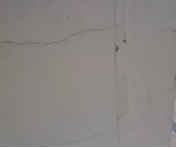
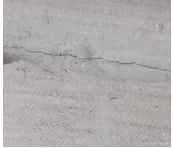 .
. 

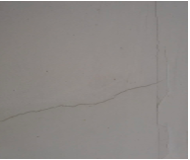

 .
. 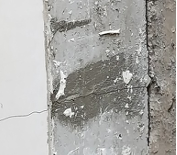 .
. 
AAC Block has replaced red brick; M Sand has replaced natural sand which is necessary from environmental point of view. As well as Fly ash brick helps to prevent environmental pollution. But, one effort was necessary to find something which is compatible with the new building materials like AAC Block, M Sand, Fly ash brick and different putty. We must know properties of each material component to get rid of any disadvantage issues in course of period.
AAC BLOCK
Autoclaved Aerated Concrete Block which is manufactured under a controlled condition Composed of quartz sand, calcined gypsum, lime, cement, water and aluminium powder or protein enzyme.
Reasons behind the crack development are contraction and shrinkage. So , few questions appears like,
What are the sources of Contraction?
How to handle Shrinkage?
Why do we see cracks through the
bricks?
Why Aeration increases Shrinkage?
What are the sources of expansion?
AAC is high on suction
Shrinkage movement is very high
Cracks appear mostly at brick joints. Cracks are usually in straight lines or sometimes stepped / diagonal.
AAC blocks are designed to be with low density for economic design of building. Aeration reduces density, by-products being low strength, high water absorption and very high shrinkage. AAC blocks are produced using aerated cementitious composite, which is autoclaved. Immediately after production, AAC Blocks are usually with high moisture content.
Effect of Material content and process
Materials used in production of AAC blocks, autoclaving process affect
shrinkage. For example, poorly graded aggregates will have high shrinkage. It is apt to dry out the AAC blocks sufficiently before putting them into use. Additionally, no water shall be supplied to
AAC blocks during construction. Now, it is common sense that effective
water curing affects high cracking in AAC.
In that case block fixing agent is used, strength of which is higher than AAC block, as a result cracks appears at other places. Normal cement sand weak mortar with self curing Nano composite based compound should be used for fixing blocks. Air increases porosity. When pores in the block receive water, that expands and shrinks on drying.
Due to this marginal expansion and contraction in length crack appears due to tensile stress. While storing at factory / site, blocks are stacked in piles. Blocks in the outer periphery dry out well but the blocks deep inside the pile do not dry enough.
Curing is the most important source of expansion.
Rain water is another source.
Sun is important source of drying.
Wind as well, depending on Relative Humidity. Diagonal cracks / cracks through bricks are due to handling of the bricks by labour. AAC blocks are poor in compressive strength; do not resist shocks when dumped from a height. They develop minor fissures internally. Crack propagation is always through the weakest zone. Brick binding mortar will be stronger than the cracked block, so crack goes through the brick. Therefore, we see diagonal cracks Otherwise, cracks in AAC blocks are always in straight lines. Steps may be observed, depending on weaker zones for crack propagation.
Exposure
If the wall is exposed to wind movement / heavy sun, susceptibility to
cracking is high. As the height increases, due to heavy wind cracking is promoted.
Workmanship
Cutting the bricks for electrical conduits etc if not done carefully,crack appears.
Shocks Due to lack of sufficient self weight, the walls move heavily even with smallest shocks. If nails are used to finished surface, there is a chance of appearing cracks.
Packing / filling materials are used to plug the holes of electrical fittings etc. which should be treated as weak zones, through which cracks appear.
Storage condition
AAC blocks should be stored under a shade away from rain. Those should be dried well before use.
All the cracks appeared on the AAC Block finished surface on internal and external wall. Truly, during construction of the building I had a visit to that project. Only six to seven months after completion of that project I was requested to visit the same building and I observed the above cracks developed on finished AAC Blocks.
There are many other case studies of the same problem. TCT can answer and solve these types of different problems which will be serially answered in next issues.
A valuable technical comment from eminent engineers in this article is very important. We must read their technical comments.

Mr. Subhas Chandra Basu
Vice President – Enginering (Tata Housing Development Company Ltd.)
AAC Blocks is a unique and excellent type of building material due to its super heat, fire and sound resistance, AAC blocks are lightweight and offers ultimate workability, flexibility and durability. Its main ingredients include sand, water, quicklime, cement and gypsum. The chemical reaction due to the aluminium paste provides AAC its distinct porous structure, lightness, and insulation properties, completely different compared to other lightweight concrete materials. AAC offers incredible opportunities to increase building quality and at the same time reduce costs at the design stage. Excellent thermal insulation, Light weight, Faster construction, environment friendly are the key take-aways
Although the advantages of AAC blocks far outweigh its disadvantages, it does have following notable disadvantages:
- Cracking in walls: we need to take precautions to eliminate drying shrinkage cracks and stress concentration cracks.
- Not perfectly suitable for Load bearing walls: the lightweight-ness becomes a disadvantage for load bearing structures and use of AAC blocks has to be done judiciously for load bearing structures.
The Answer:
- Choosing right mortar for laying of blocks, possibility of using Nano-polymer in the mortar.
- Although AAC wall do not need curing, but conventional idea of water curing has to change.
- In case of cracks on the wall it needs a special treatment for crack repairs.
We have engaged in special treatment wherever we came across such cracks and received desirable results.

Mr. Avijit Dutta
Deputy General Manager ( Construction)
SHAPOORJI PALLONJI AND CO. PVT.LTD.
Dear Mr. Bhattacharya,
Thank you for considering the article on construction with AAC blocks. My views are as follows.
Your analysis on this subject is very relevant & helpful for all construction engineers . Use of AAC blocks in building construction is a recent development due to various problems (viz. non-availability of good quality clay bricks, economic designing of buildings & environmental issues). But as the masons are not accustomed with such type of blockwork, hence, workmanship and their skill development is also very important. So, for sustainable construction, I propose to train these masons & supervisors with the “DOS & DON’TS” before starting construction with AAC blocks. This can be successfully carried out by sharing a “Standard Methodology” by the consultants and engineers. I am thankful and must appreciate your efforts in ushering some lights on this subject.
Thanks & regards,
Avijit Dutta
To be continued……………..


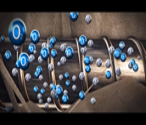


Indeed, a very beautiful symbol of True Knowledge : an amalgam of science, music & poetry !